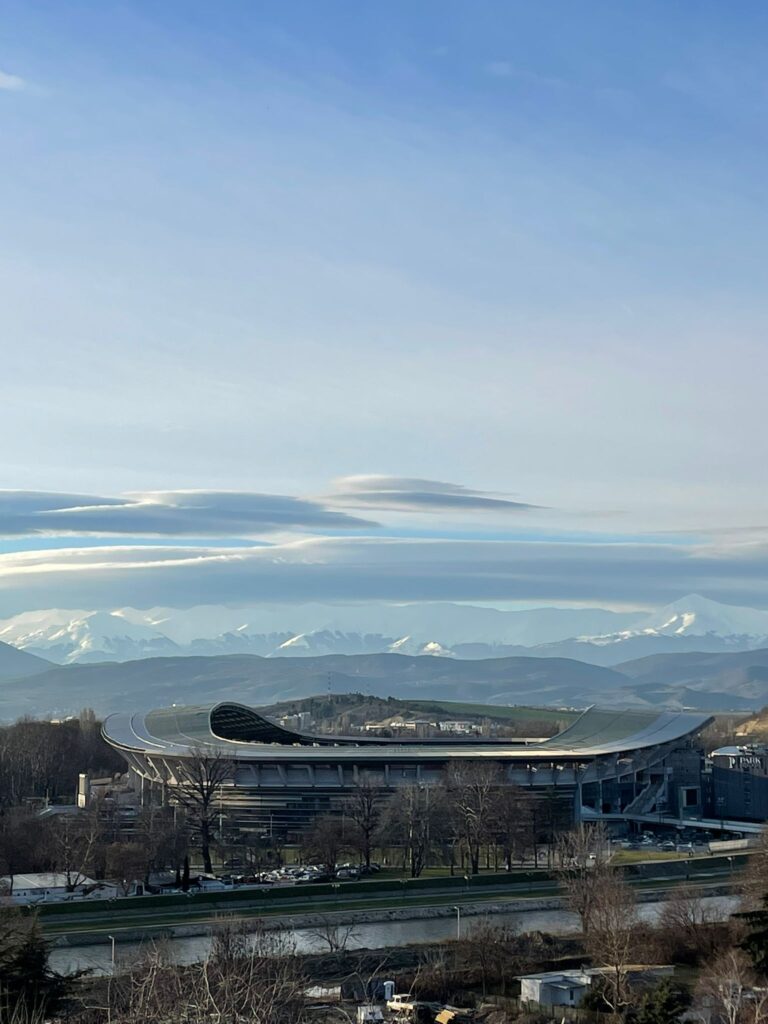One Of Europe’s Hidden Gems: Is North Macedonia Worth Visiting?
Disclaimer: Some links on this page may be affiliate links. If you purchase anything through them, I will receive a small commission at no extra cost to you! Further details in the Privacy Policy.
Introduction
With neighbours including popular Greece and up-and-coming Albania, is it worth visiting North Macedonia?
After all, what can this tiny country offer which its more prestigious neighbours can’t?
The answer to that question is: a lot.
This is one of the best countries in Europe. North Macedonia has an impressive history for such a tiny nation. Not to mention stunning mountains surrounding the beautiful capital, Skopje.
There are also remnants of its Ottoman past, clear signs of influence from Albania, and a few cultural nods to iconic touristic landmarks in Western Europe.
Read on to learn a little history about North Macedonia, and pick up some advice you should know before visiting the country. Is North Macedonia cheap? How do I get to North Macedonia? What is there to do in Skopje?
These questions and more will be answered below.
Since I only visited Skopje, destination advice will be centered around there.
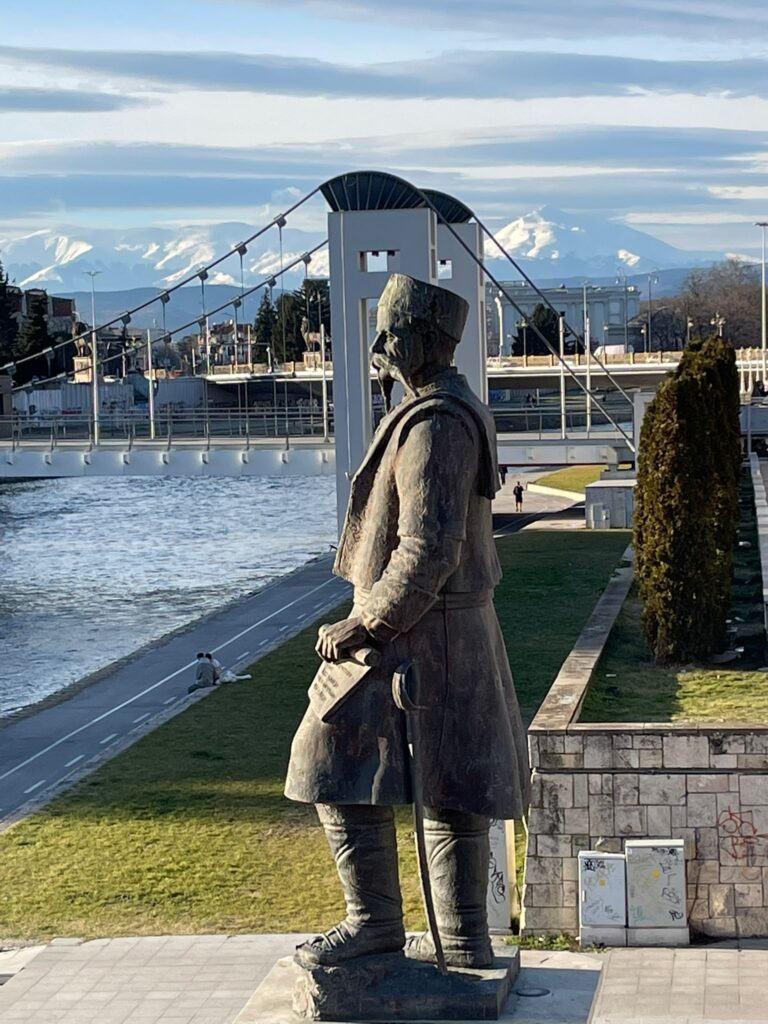
Background on North Macedonia
Early History
What is now the country of North Macedonia, was once conquered by larger empires such as the Persian and Roman empires.
Indeed, it once formed an empire itself, the Macedonian Empire. In fact, it was once the world’s most powerful kingdom. Philip II of Macedon conquered much of modern-day Greece. His son, Alexander the Great, carried on and expanded the empire up towards what is now India.
Ancient Greece was the world’s leading superpower. It was a leader in arts, literature, engineering and more. By conquering this territory, the Macedonian Empire was the most powerful on earth. This made Alexander the Great a hero, and he is revered in Skopje over 2,300 years later.
North Macedonia as Part of SFR Yugoslavia
The Socialist Federal Republic of Yugoslavia (SFRY) was set up at the end of WWII as the Axis powers were driven out of seven modern-day countries, which merged together to form the SFRY. These countries were Slovenia, Croatia, Bosnia Herzegovina, Serbia, Montenegro, Kosovo and North Macedonia.
The SFRY spent most of its existence under the leadership of Josip Broz Tito, a communist who led the country up until his death in 1980. Tito was fairly moderate for a communist. His Yugoslavia followed a policy of neutrality, neither siding with the Eastern Bloc nor the west. As a non-aligned country, the SFRY was able to maintain positive relations with both sides, which helped boost the economy.
Tito also did a good job of keeping ethnic tensions in check. The SFRY was made up of several ethnic groups including the Croats, Bosniaks and Serbs who would later become embroiled in a series of wars as Yugoslavia collapsed in the early 1990s. Under Tito’s reign, there were few flare-ups and the nation was able to live in relative peace.
However, Tito created an environment of fear where free speech was suppressed and political opponents were persecuted. The secret police were known to torture political enemies.
Yet overall, the country was stable for most of its existence. It was only following the death of Tito that a power vacuum opened up, the economy crashed, and ethnic tensions rose towards boiling point.
Independence from the SFRY
Whilst wars ripped apart Serbia (and Montenegro and Kosovo: the three remained one country for several more years), Croatia and Bosnia Herzegovina, North Macedonia was able to gain independence peacefully. In 1991, 95% of North Macedonia’s population voted for independence.
They were the only former Yugoslav Republic to gain independence without resistance. Serbia (along with Montenegro and Kosovo) formed the rump state, the FR Yugoslavia (dropping the “Socialist” from their name). And FR Yugoslavia had positive relations with North Macedonia for the remainder of its short existence.
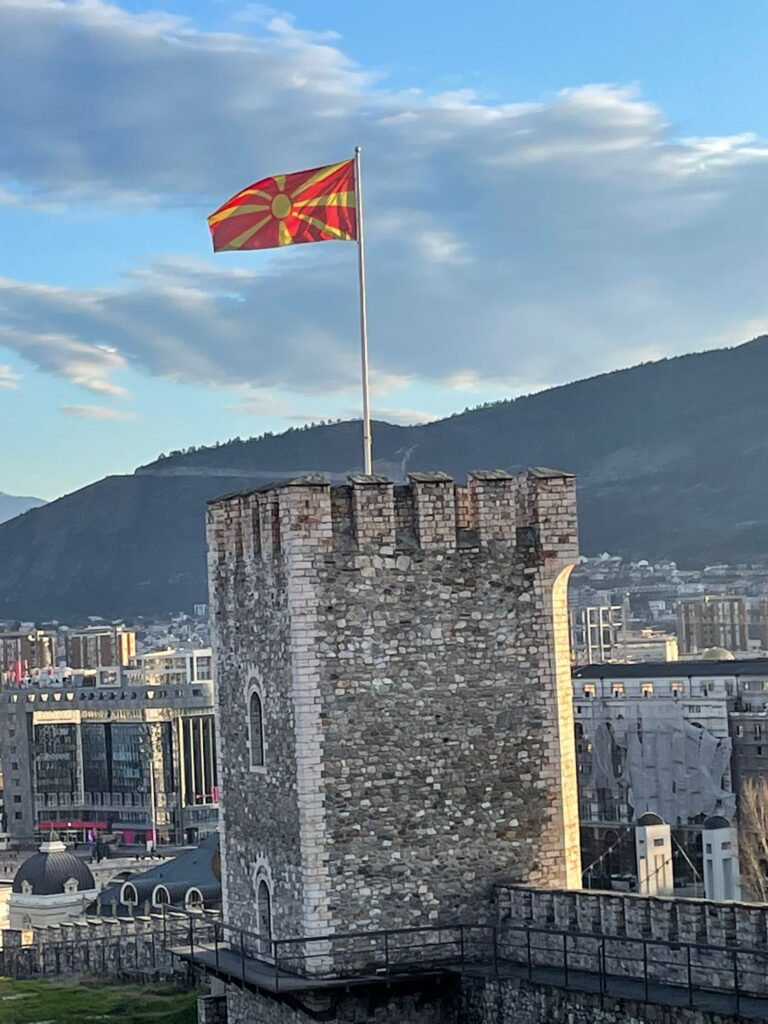
Post-Communist North Macedonia: Insurgency, Westernisation and Naming Disputes
Insurgency
The one outbreak of violence to take place in an independent North Macedonia came in 2001. Over 300,000 refugees came over during the Kosovo War in 1999.
Kosovans are generally ethnic Albanians.
By introducing such a large population of another ethnic group into the country, there were tensions between the Albanians and native Macedonians.
A group calling itself the National Liberation Army (NLA) formed. Their goal was to, in their words, guarantee equal rights for Albanians within North Macedonia. The Macedonians believed they wished to seize territory and unite Albanian-majority territories within Albania itself.
The NLA committed a series of attacks, with over 250 people killed, over a third of those being civilians. For months, war in North Macedonia was a serious possibility.
Yet the insurgency ended with a peace deal, the Ohrid Agreement, which put an end to the fighting in return for increased power within North Macedonia for Albanians. Therefore the country never experienced a messy conflict like many of its neighbours had experienced.
Westernisation
As with pretty much every European country following the collapse of communism, North Macedonia has been keen to strengthen ties with the west rather than the east.
North Macedonia became the 30th member of NATO in 2020, and holds aspirations to join the EU. However, their hopes of joining the EU have been put on hold for now due to disagreements with Bulgaria. Despite the two countries signing a friendship treaty in 2017, Bulgaria refuses to support North Macedonia’s EU accession bid until the latter recognises the alleged Bulgarian roots of the Macedonian language and ethnic group.
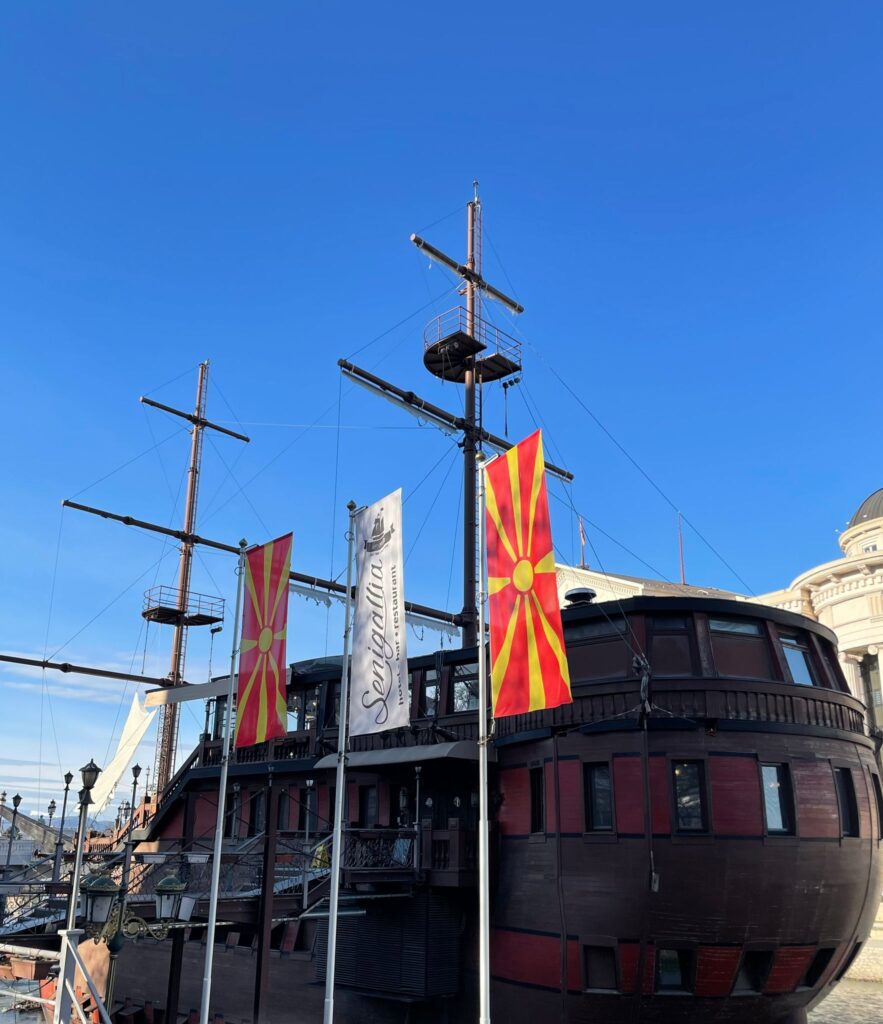
Is North Macedonia Safe to Visit?
Yes, North Macedonia is one of the safest countries in Europe. The one minor issue you should be aware of is pickpocketing. Especially around the Central Bus Station. I was targeted here myself. One man approached me to strike up a conversation, whilst a second circled behind me. I moved to keep him within view, but he continued to sneak around me until realising I was fully aware of what he was attempting.
Violent crime is almost non-existent, and North Macedonia is a safe country to walk around after dark.
Unlike in other Balkan countries, landmines are not a major concern here. Mines placed during the 2001 conflict have been removed. There is still unexploded ordnance from WWI and WWII dotted around the country, although the chances of encountering it are minimal. There are known to be explosives at the bottom of popular Lake Ohrid.
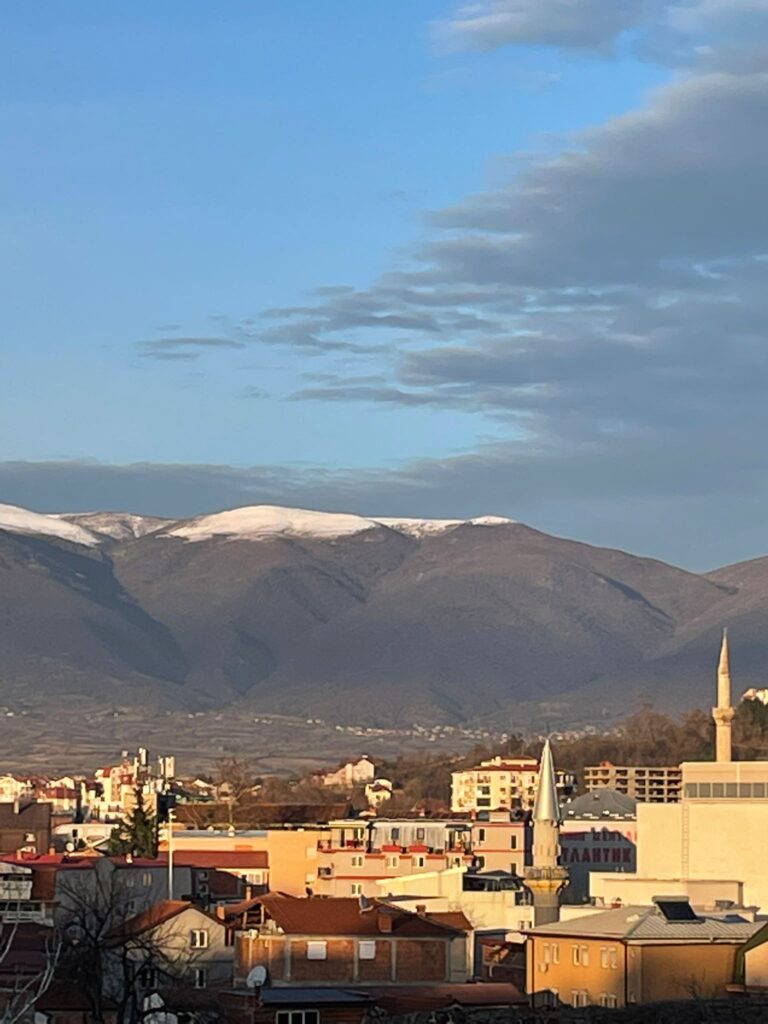
When is the Best Time to Visit North Macedonia?
North Macedonia is accessible at all times of year. March-October are the best months to go for warmer weather, with June-August attracting the bulk of the tourist crowds.
November-Feburary are the months to visit if you wish to ski.
Therefore the best months to visit if you don’t wish to ski are March-May and September-October. You will avoid the heaviest crowds, and still experience good weather.
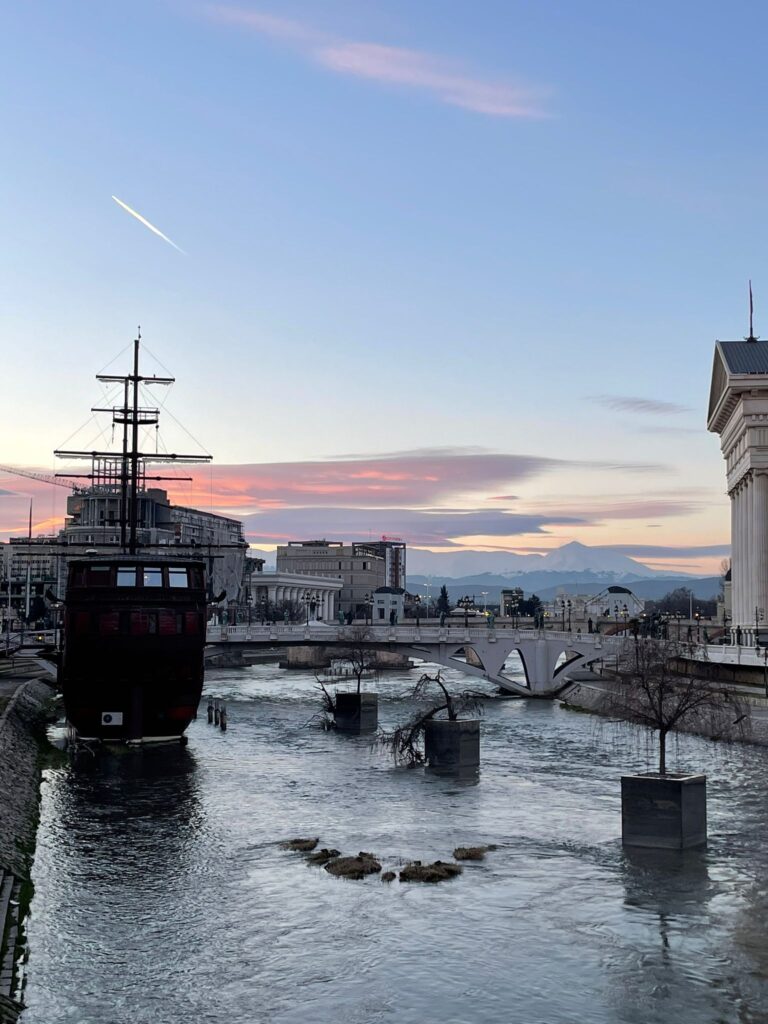
How to Visit North Macedonia
You do not need a visa to enter North Macedonia if you are from any country in Europe or the mainland Americas, with a small number of exceptions. The exceptions are Russia, Belize, Bolivia, Ecuador, Guyana and Suriname. Citizens of those countries do require visas to enter North Macedonia.
Citizens of most other countries will need a visa to get in. Notable exceptions are Australia, New Zealand, Malaysia, Japan, South Korea and the UAE.
How to get to North Macedonia
There are two international airports in North Macedonia: Skopje International Airport in the capital, and St. Paul the Apostle Airport in Ohrid.
This tiny country is not the best for connecting flights. It is linked to a number of other European countries, although even some major destinations such as Portugal and Spain have no direct flights. Outside of Europe, only Hurghada in Egypt is connected to Skopje, although only from April to October.
Ohrid connects North Macedonia with just five other countries: Serbia, Germany, Austria, the Netherlands and Switzerland.
There are also buses that can get you into the country. To come up from Greece, you can travel from Thessaloniki to Skopje, with the bus taking 4.5 hours on average. Buses also run from most other Balkan countries and Turkey.
Trains currently run between the main airports in Skopje and Serbia’s capital Belgrade, with journeys taking just over an hour. There are also daily trains between Skopje and Pristina in Kosovo. Trains to and from Greece no longer run.
How to get Around North Macedonia
The train network in North Macedonia is a good one, covering most of the country, including Skopje. Although popular Lake Ohrid is not accessible by train. Instead the closest you can get by rail is Bitola, with a bus required from there.
Speaking of buses, this is the best way to get around the country. Buses can range from what would normally be considered a “bus” in western Europe, to small minivans that leave without always following a set schedule. Often they will leave when full.
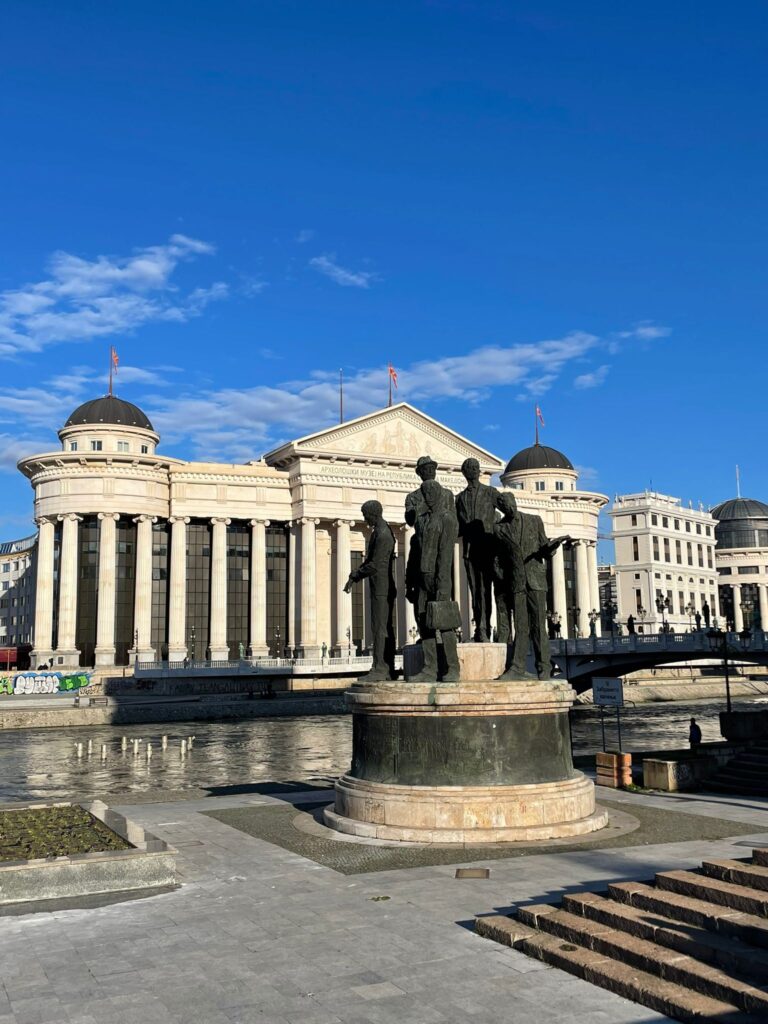
Is North Macedonia Cheap to Visit?
North Macedonia is one of the cheapest countries in Europe. I managed to get by on £18 ($23) per day here. Only Albania, Kosovo and Moldova were cheaper.
Accommodation cost just £6 ($8) for a hostel room. Although if you check out the accommodation section below, you will notice a minor price rise since my visit in February 2023. Private rooms start from the same sort of price in Ohrid, and £10 ($13) in Skopje.
Dinner cost around £3 ($4) per day on average in Skopje’s ultra-affordable restaurants near the bazaar.
Transport costs a little more. The cost of a one-way ticket between Skopje and Ohrid is around £13 ($16). Buses to the nearest international capitals cost around £20-£35 ($25-$44).
The cheap prices and cool sites make North Macedonia a fantastic solo travel destination.
Where is Worth Visiting in North Macedonia?
Tourists in North Macedonia generally visit two places: Skopje, and Lake Ohrid. I arrived in the country early in February when the weather was cool, and decided against visiting Ohrid. Therefore I will focus on Skopje here. The capital alone makes North Macedonia worth visiting.
Skopje
Statues of Alexander the Great
The local hero is immortalised in the history books, and his likeness pops up on a regular basis in the Macedonian capital.
His father, Philip of Macedon and even his mother also make appearances in statue form. The Macedonian people are very proud of their strong empirical past.
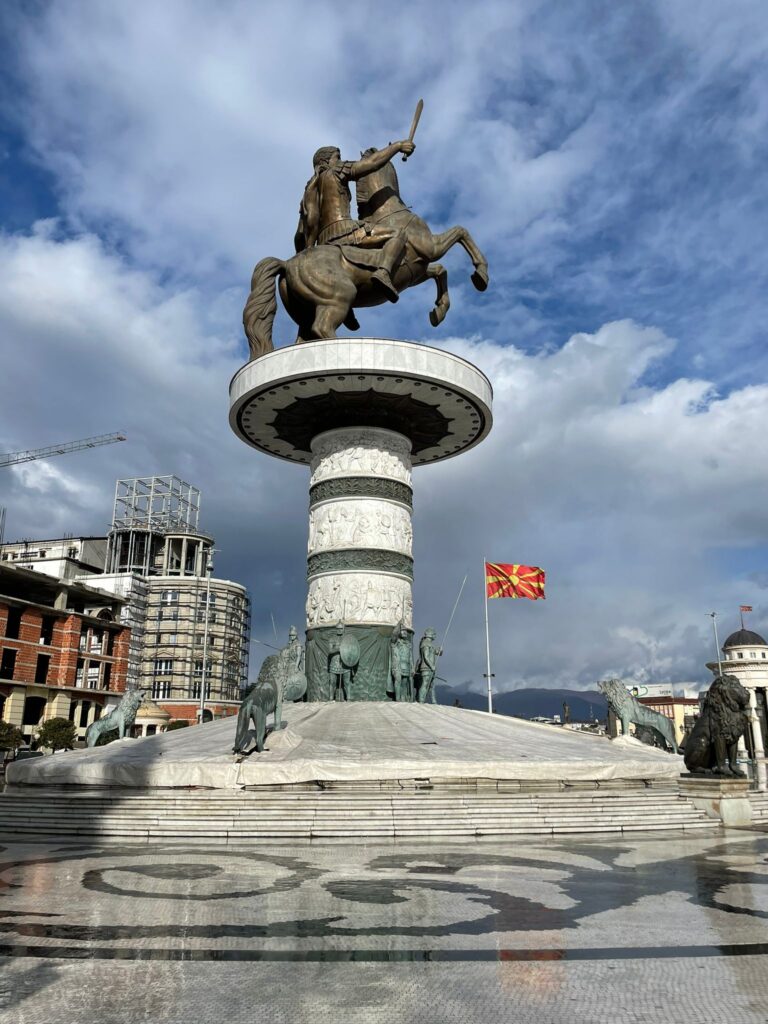
Mother Teresa Memorial House and Remains of her Childhood Home
Alexander the Great is one of two revered local heroes in Skopje. The other is famous missionary Mother Teresa. She was born in Skopje, and the remains of her childhood house, in which she was born, remain today.
Unfortunately her house was destroyed during a 1963 earthquake. However a plaque remains on the spot where it once stood.
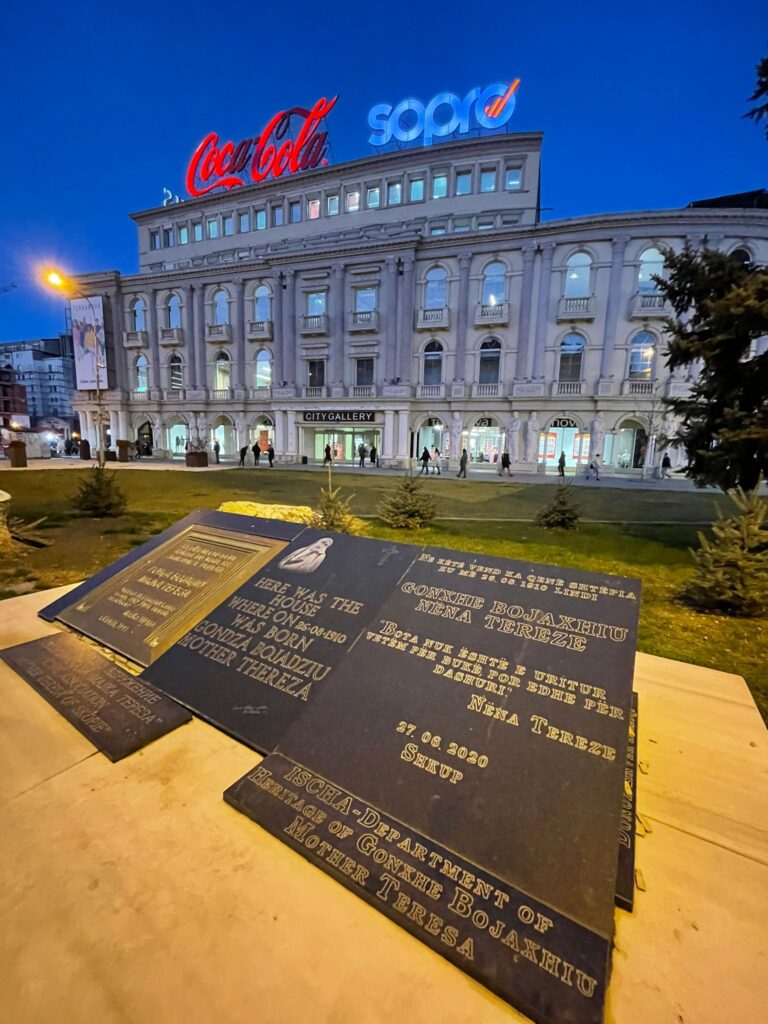
Mother Teresa’s house may be no more, but a memorial house was built in her honour, two years after her death in 2009. The house is now a museum which is free to enter. It has a lot of documents relating to the life and work of Mother Teresa.

Enjoy Replicas of Famous European Attractions
Skopje 2014 was a project designed to make Skopje an attractive destination for tourists. Over $700 million was pumped into the project. There were other reasons behind the project such as creating more schools and museums as well as making the new structures earthquake-proof. However, one outcome of the project is miniature copies of iconic structures from across the rest of Europe.
Arc de Triomphe
One such example is the Arc de Triomphe. This is of coursed based on the famous structure in Paris.
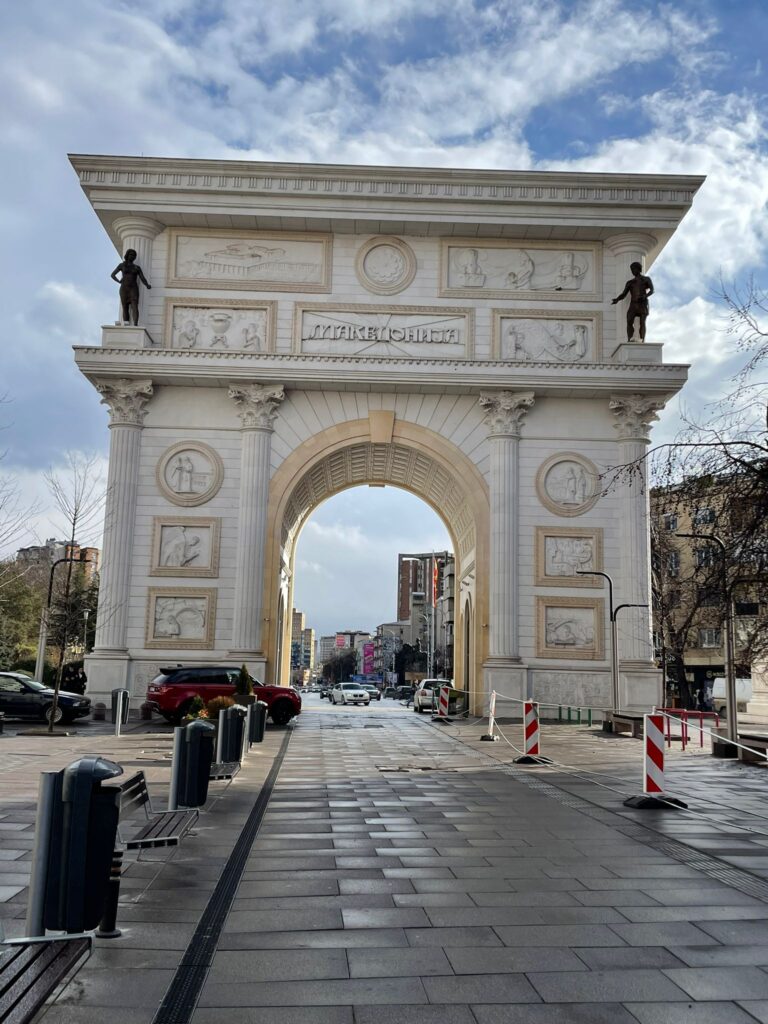
How does this Macedonian version compare to the real Arc de Triomphe in Paris? Well let’s have a look at that one too:
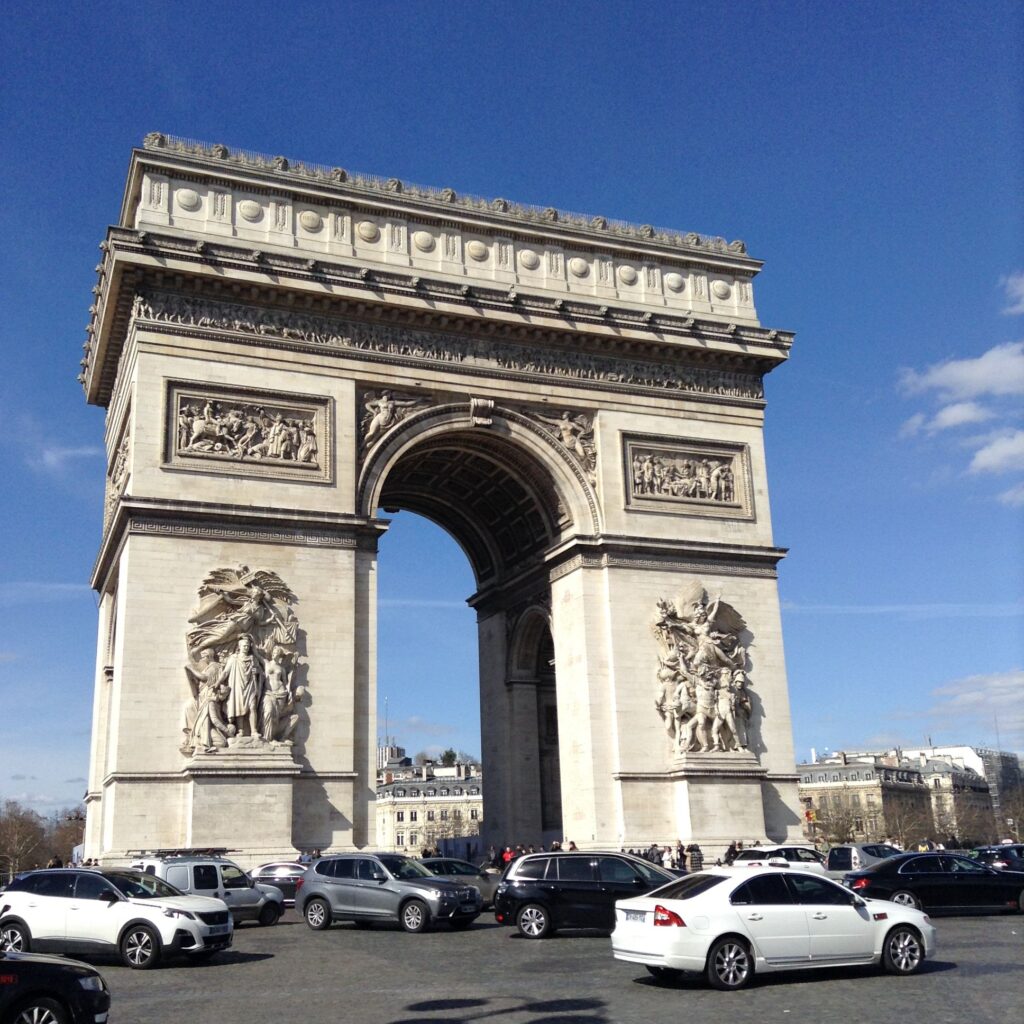
Whilst still impressive, Skopje’s version seems to have slightly less detail carved into the structure. It is also much smaller than the original.
Brandenburg Gate
Next up in Skopje’s European carbon copies list is the Brandenburg Gate. Having never been to Berlin at the time of writing, I do not have a photo to compare it to, but here’s Skopje’s version of the famous gate.

Red London Buses
Lastly, Skopje has decided to mimic London with the introduction of the British capital’s iconic red buses. These quirky replicas certainly add to Skopje’s charm.
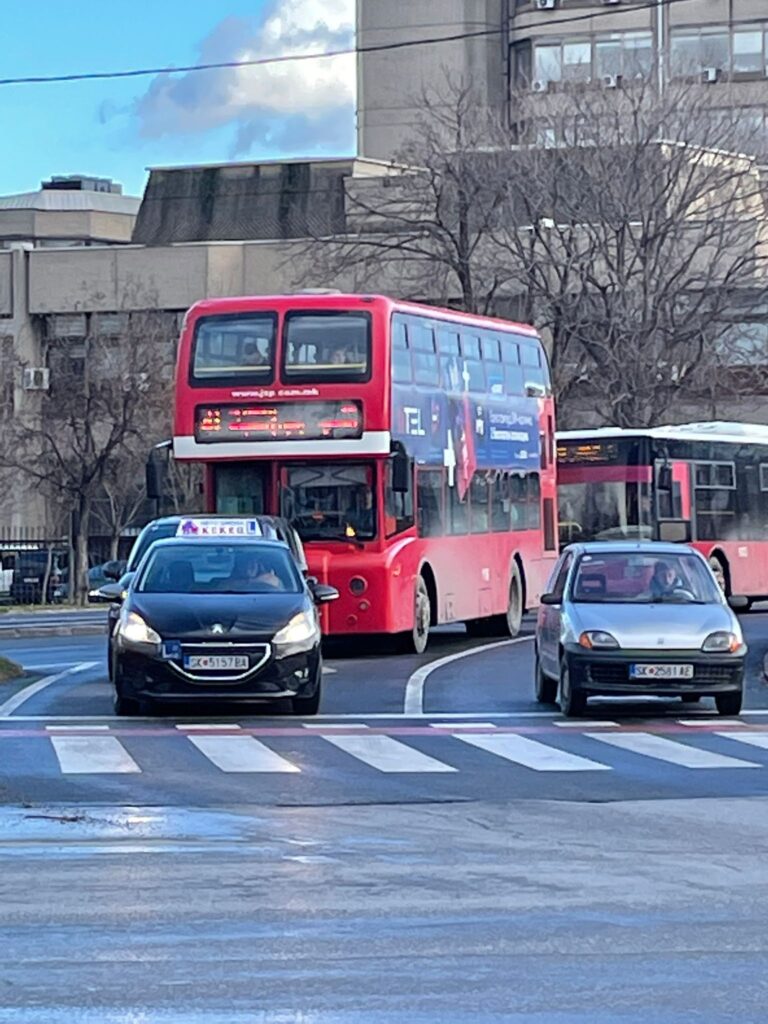
Skopje’s Old Bazaar
As a former member of the Ottoman Empire, it is no surprise to see a Turkish-style bazaar pop up in the streets of Skopje. The bazaar has a lot of traditional crafts, jewellery and some of the most affordable restaurants in Skopje.
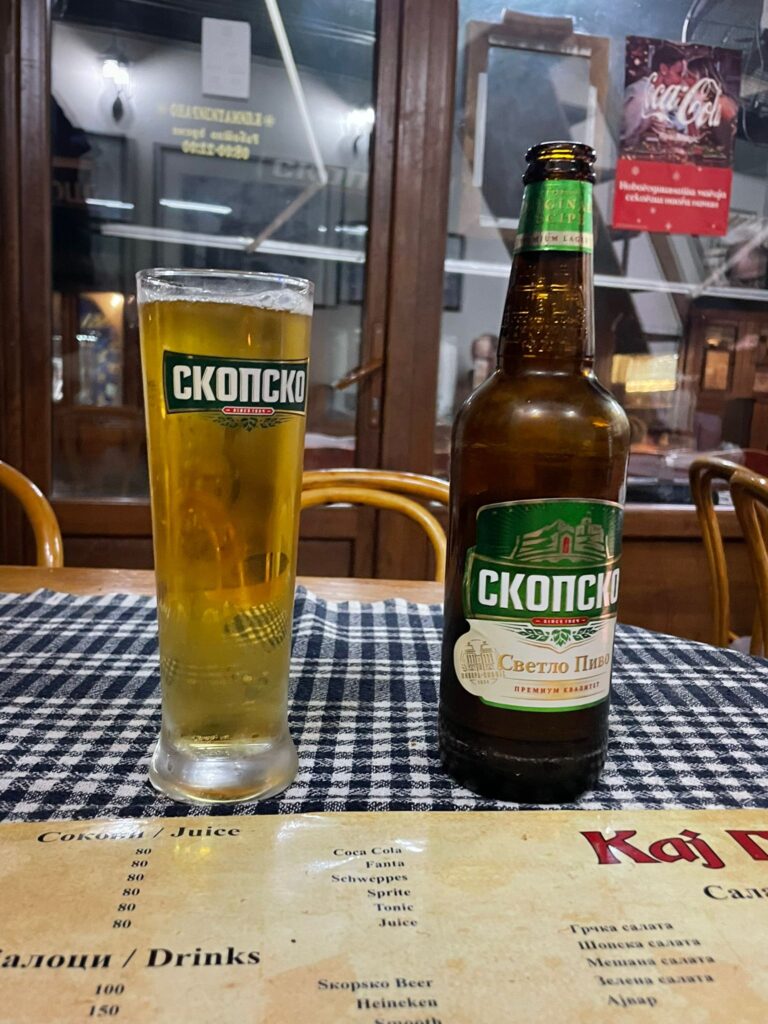
With high numbers of Albanians living in North Macedonia, it is unsurprising to see their flag in many corners of the Old Bazaar.
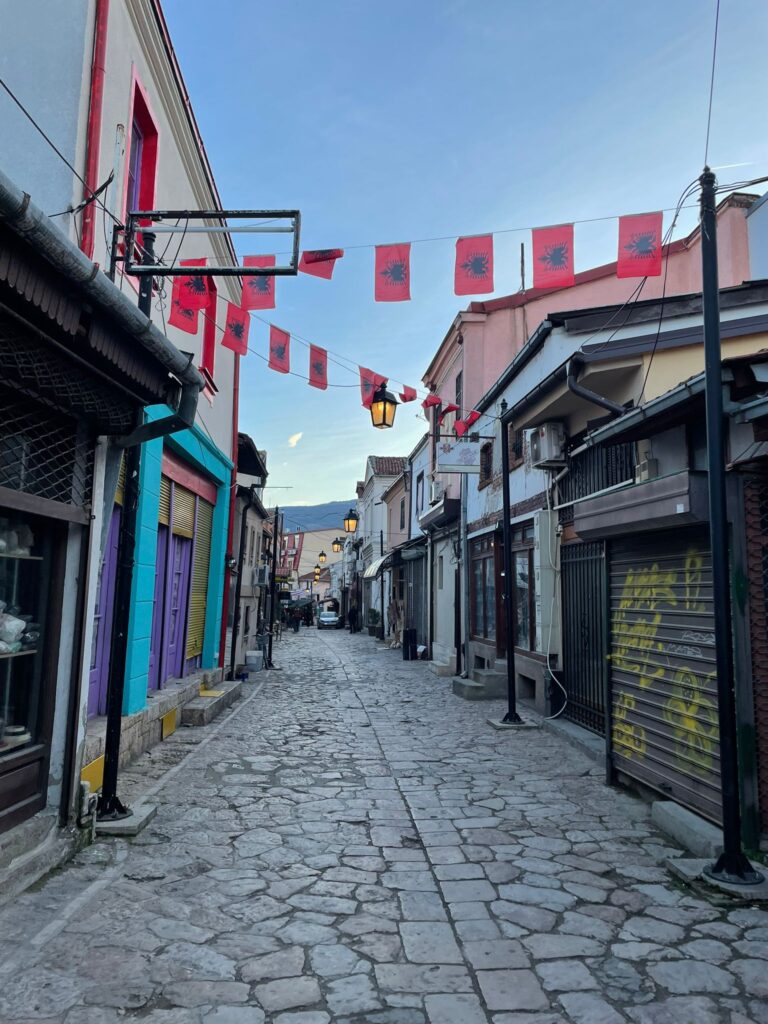
The highlight of the bazaar is most certainly finding a modest family-run restaurant where you can get some cheap local food and a beer. Balkan cuisine tends to be very meat-centric, so it’s guaranteed to fill you up and leave a good taste in your mouth.
Where to Stay in North Macedonia
I spent a couple of nights in Skopje, based in a small hostel near the bus station. Must admit I’ll remember this place more for the eccentric characters I met rather than the hostel itself, but if you’re looking for a cheap hostel room in Skopje, read on and decide for yourself if you wish to stay in the same place I did.
Skopje – Get Inn Skopje (£7/$9 Per Night)
Pros
As you can see, it was very cheap. The location was reasonable, near the bus station and a large supermarket with everything you could possibly want. It’s around a 15-minute walk from the city centre. The lockers were a reasonable size and the wifi worked well.
Cons
The staff were pretty miserable here, and the surrounding streets are fairly run-down. I’d consider these to be pretty minor issues, and didn’t really have a negative experience in this no-frills hostel. However… look at the online reviews, and you will see one theme popping up repeatedly. Bedbugs.
This was not something I was aware of before staying (always read the reviews first!). And whilst I never experienced any issues, this is a big problem.
Overall
Despite having no issues myself, I would never recommend a place with a reputation for bedbugs. Ignoring these, I’d give this place a 6.5/10. However, with so many reviews bringing up this issue, it is clear that this is not a wise place to stay.
Bedbugs leave itchy bitemarks and cause irritation. In the worst cases, they can trigger a severe allergic reaction. If a place has bedbugs, it is a sign of other hygiene and cleanliness issues. They also spread like wildfire, clinging onto clothing or luggage.
Consider other accommodation options in Skopje. It wasn’t just one or two reviews mentioning this issue…
The Get Inn Eccentrics
Just a fun story rather than anything relevant that should influence whether or not you stay here.
When you travel you will meet all sorts of people on the road. Some will have a lot in common with you, others will lead completely different lifestyles. And some will be fascinating characters you’re unlikely to ever forget. The people I met at Get Inn Hostel fit into the third category.
The 4-Year-Old Wanted by the CIA
Whilst quietly doing some work in the common area, an American guy with shoulder-length hair started talking to me.
He seemed normal for a minute or two.
Then he began to tell me that he’s a refugee who fled the USA, having been tracked by the CIA since the age of 4. His reason being “because I know stuff about them”. He never elaborated further on this when I pushed.
He seemed to be a bit of a whimsical tech nerd with a particular interest in homemade robotics. His dream was to open a shop in Odessa, Ukraine, where he lived, and sell all sorts of quirky tech-based inventions.
Anyway, speaking of Odessa, this is where he lived during the expansion of war in February 2022 (not the start, the Ukraine War started in 2014). He told me how a bomb obliterated an apartment building right across the street from him, and he ended up fleeing to Moldova (well, the unrecognised territory of Transnistria) to escape the conflict.
His story gets crazier. He told me how he was held in a refugee camp within Transnistria for several months. Many Ukrainians were apparently held in this pro-Russian separatist territory located not far from Odessa.
He said they would not let him leave, despite being able to prove he had a US passport meaning he could easily leave to another country.
He said that he eventually got out after three months, and drifted around the Balkans ever since. Unfortunately I cannot remember how he said he got out.
This is why I should’ve started blogging sooner, when events such as this were fresher in the memory!
The Proud Descendent of Nazis
Anyway, he wasn’t the only chap at this hostel to raise an eyebrow. I spent the night drinking wine with him and a German guy with some interesting stories of living and travelling in the likes of Burundi and South Sudan.
As the wine flowed, the German became more confident talking about his ancestors.
As the meme goes: you should never ask a woman her age, a man his salary, or a German what their grandparents did in the early 1940s.
However, this guy differed from the usual German you meet, reluctant to talk about their dark history. In fact, he was very proud of it.
He boasted how his grandparents were Nazis. Not only that, but he claimed his great-grandparents were amongst the group which arrested Anne Frank, and began the journey towards her murder at the age of 15.
Not sure this was something to be proud of…
Funnily enough, I decided against asking these two for their Instagrams. Some people you meet on the road are best left as “five-minute friends” who you meet abroad, connect with, and never make contact with again.
You Meet the Most Interesting People on the Road
Despite the dubious characteristics of these two individuals, I guess there is a point to this story.
When you travel, you meet all sorts of different people. And you will eventually come into contact with some very interesting characters with memorable stories to tell.
I’ve met people who’ve been to over 150 countries, people with stories of gunpoint robberies and Russians who fled to avoid fighting in the war. I’ve also met a man who coached one of Germany’s best basketball teams for 20 years, and a lady who survived being shot in the head by her ex-husband in Kuwait.
If you live and work in an office job for 40 years, you will most likely not meet people like this. Both the good and the bad are memorable and have their own stories to tell. It’s one of the real beauties of travel, to be able to meet these larger-than-life characters.

Final Thoughts: Is North Macedonia Worth Visiting?
North Macedonia is absolutely worth visiting. Skopje is one of the most exciting cities in Europe, as well as being one of the cheapest.
The stunning mountains around Skopje create a beautiful backdrop, making this one of Europe’s most scenic cities. Add in a rich history, hearty local cuisine, and lots of quirky monuments such as the Arc de Triomphe/Brandenburg Gate imitations and there is a lot of charm to be found here.
Your budget will stretch a lot further than it would in many other countries, particularly in Europe.
Personally I found North Macedonia to be one of the best countries on the entire continent, much more so than many of the big names. I would much rather come back here, than to France for example.
It still seems to be common to go on holiday to the most mainstream destinations. France, Greece, Turkey etc.
However by adopting this mentality, you close the doors to many lesser-known gems such as North Macedonia. This country represents why I travel. To find these unique gems that don’t get the same love as much bigger Western European countries.
After beautiful Bosnia Herzegovina, this is my favourite country in the Balkans. And I’ve been to them all. North Macedonia is absolutely worth visiting next time you book a trip abroad.
Check out my destinations page for more tips and stories from my journey to visit every country in the world.
